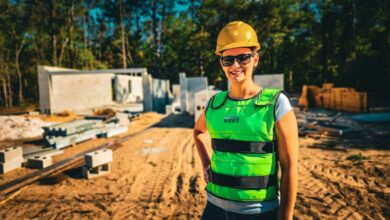Integrated Water Management
By Steven Peck
While in grade nine, I remember being totally captivated by a book called “Dune,” which described a planet in which water was a scarce and incredibly precious resource. Frank Herbert, the genius who wrote an entire series of science fiction books introduced me, and many others, to the shear enormity and power of water scarcity, and its profound ability to shape and even destroy entire civilizations.
Several years ago I discovered, while speaking about green roofs in Brisbane, Australia that this city of more than 2 million people was only about 10 months away from the bottom of its aquifer. I wondered, what does one do when that many people, and that many businesses, don’t have potable water? Can you really truck that much water into the city? Australian water shortages also establish an overriding environment that defines what can and cannot be done in terms of urban greening.
In response to water scarcity in many regions of the United States, Green Roofs for Healthy Cities (GRHC) assembled a group of member experts under the early leadership of Chris Peck, to begin to look at holistic approaches to conserve, produce, harvest, store and utilize a variety of water sources in order to be able to provide irrigation water for green roofs and walls in arid climates such as Southern California and Nevada. This early conceptual work has lead to formation on an expert committee that is now working to develop these concepts more fully, in partnership with the American Society of Irrigation Consultants. The committee is working under the leadership of Lynda Wightman of Hunter Industries and Jeffrey Bruce of Jeffrey L. Bruce & Company. These subject matter experts are working to advance the state of knowledge and practice on how to capture, treat, store and utilize a wide variety of water sources within, on and around a building and the adjacent site.
Our future ability to retain the many positive benefits of vegetation in cities will hinge directly upon the wise use of our water resources in an increasing number of markets in the years ahead. Pioneering research by Dr. Paul Mankiewicz, of the Gaia Institute in New York City has already demonstrated that the energy-saving potential of green roofs through evapotranspiration can help to significantly offset water resources used to generate electricity used for mechanical cooling. Green roofs can also cool intake air of air conditioning units resulting in further energy savings. In other words, energy equals water, and water equals energy — to varying degrees when it comes to green roofs and walls. This expert committee will apply integrated design and management principles and technologies to the issues of water shortage and urban greening. They will have to struggle with the fact that one-size-fits-all solutions simply don’t work when it comes water.
Regulatory frameworks and governing bodies that deal with water management are a tangled web, which varies in its complexity from jurisdiction to jurisdiction. The committee will attempt to make some sense of this and provide guidance for individuals who are interested in implementing integrated approaches to water and urban greening.
The course will also be a key component of the continuing education requirements of the new Green Roof Professional (GRP) accreditation program, launched in 2009. The GRP accreditation is supported by four professional development courses offered in different locations throughout North America. (See www.greenroofs.org for a course and exam calendar). GRHC training was recently approved for continuing education units by the U.S. Green Building Council, and is part of the American Institute of Architects requirements, as well as other regional professional associations.
The first water course will establish the foundation upon which additional, more detailed technical training will be established in the future. For now, we need widespread industry expert participation to pull together the highest quality information for the course. Our goal is to launch the first course on June 1, 2010 at our “Regional Green Roof and Wall Conference and Training” in Washington D.C. For more information about the Washington conference and training contact Jennifer Sprout at jsprout@greenroofs.org or visit www.greenroofs.org
Together I’m hopeful we can utilize new technologies and design practices that will help to ensure that most of our communities remain sustainable, and green, well into the future.
Steven Peck is the founder and president of Green Roofs for Healthy Cities. The association has more than 5,000 members and has completed several initiatives designed to generate a market for widespread green roof infrastructure implementation.
GRHC and ASIC Integrated Site and Building Water Management Expert Committee Members
- Doug McDonald, Aqua Engineering
- Brian Vinchesi, Irrigation Consulting
- Michael Krones, Ph.D., Hydro Designs, Inc.
- Norm Bartlett, ASIC executive director
- Linda Maley, Atlantis Water Management
- Mark Anderson, Tremco
- Brent Bucknam, Hyphae Design Laboratory
- Mike Warren, Watertronics
- Alfredo Fernandez Gonzalez, UNLV School of Architecture
- Marty Dickson, Dickson & Associates, Inc.
- Dan Pope, Dan Pope & Associates
- Zach Williams, Carlisle Construction
- Lynda Wightman (chair), Hunter Industries
- Jeffrey Bruce, Jeffrey L. Bruce & Company

